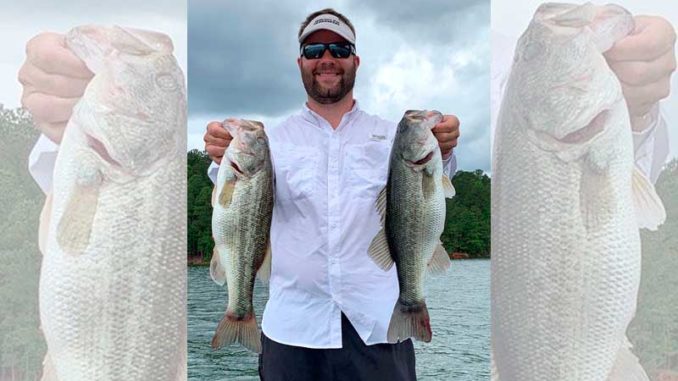
Crankbaits work early in July, followed by finesse fishing.
In July, South Carolina’s Lake Monticello — like other Southern reservoirs — is in the midst of the dog days of summer, so called because it is a time when Sirius, the “dog star,” rises and sets with the sun and is not seen at night in the Northern Hemisphere.
One description of this sultry summer period from July 3 through Aug. 11 said it is a time marked by lethargy, inactivity or indolence. Largemouth bass exhibit all those traits when the water heats up to an uncomfortable level.
“This normally means the bite is a little more sporadic,” said bass pro Andy Wicker of Pomaria, S.C. “However, when they are biting, it can be pretty good.”
When summer temperatures are at their peak, Wicker will spend the first hour of daylight throwing a topwater bait like a popper around the bank, targeting any visible cover that is in the water.
Wicker fishes deep most of July

“But most of my time in July will be spent out deep. I’m targeting humps and points that have bait and brush in 20 to 35 feet of water,” said Wicker. He works big, deep-diving crankbaits and big worms early in July. He slows down later in the month to a shaky head or drop-shot rig to catch deep fish. Any sort of finesse worm will work and natural colors, such as green pumpkin, seem to be best, he added.
The current in the lake also plays a major factor in July, he said.
“This lake fluctuates every day due to power generation,” Wicker said. “It’s not as much current as a river or TVA lake, in July. But still the bass seem to feed in small windows around the strongest current. Pay attention to that and make sure you are fishing the places you think are best when there is current being generated.”
These tactics work well, he said, until the weather and water start changing in August.
“When it changes, the schools break up out deep and the fish scatter. Normally, they move back into the 15-foot range then,” Wicker said.
Click here to read up on a great bass fishing rod.
